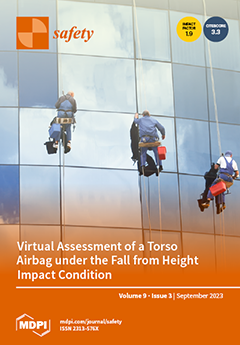Due to the advancements in real-time information communication technologies and sharing economies, rideshare services have gained significant momentum by offering dynamic and/or on-demand services. Rideshare service companies evolved from personal rideshare, where riders traveled solo or with known individuals, into pooled rideshare (PR),
[...] Read more.
Due to the advancements in real-time information communication technologies and sharing economies, rideshare services have gained significant momentum by offering dynamic and/or on-demand services. Rideshare service companies evolved from personal rideshare, where riders traveled solo or with known individuals, into pooled rideshare (PR), where riders can travel with one to multiple unknown riders. Similar to other shared economy services, pooled rideshare is beneficial as it efficiently utilizes resources, resulting in reduced energy usage, as well as reduced costs for the riders. However, previous research has demonstrated that riders have concerns about using pooled rideshare, especially regarding personal safety. A U.S. national survey with 5385 participants was used to understand human factor-related barriers and user preferences to develop a novel Pooled Rideshare Acceptance Model (PRAM). This model used a covariance-based structural equation model (CB-SEM) to identify the relationships between willingness to consider PR factors (
time/cost, privacy, safety,
service experience, and
traffic/environment) and optimizing one’s experience of PR factors (
vehicle technology/accessibility, convenience,
comfort/ease of use, and
passenger safety), resulting in the higher-order factor
trust service. We examined the factors’ relative contribution to one’s
willingness/attitude towards PR and
user acceptance of PR.
Privacy,
safety,
trust service, and
convenience were statistically significant factors in the model, as were the
comfort/ease of use factor and the
service experience,
traffic/environment, and
passenger safety factors. The only two non-significant factors in the model were
time/cost and
vehicle technology/accessibility; it is only when a rider feels safe that individuals then consider the additional non-significant variables of time, cost, technology, and accessibility.
Privacy,
safety, and
service experience were factors that discouraged the use of PR, whereas the
convenience factor greatly encouraged the acceptance of PR. Despite the
time/cost factor’s lack of significance, individual items related to time and cost were crucial when viewed within the context of convenience. This highlights that while user perceptions of privacy and safety are paramount to their attitude towards PR, once safety concerns are addressed, and services are deemed convenient, time and cost elements significantly enhance their trust in pooled rideshare services. This study provides a comprehensive understanding of user acceptance of PR services and offers actionable insights for policymakers and rideshare companies to improve their services and increase user adoption.
Full article





